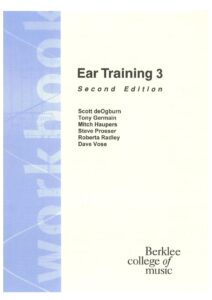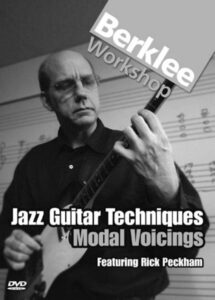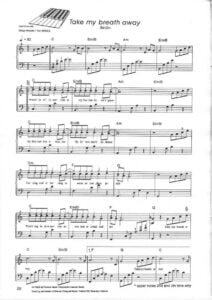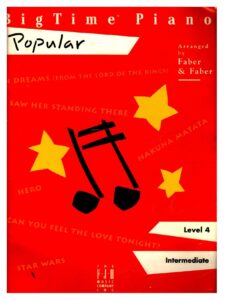Table of Contents
ANTONIO CARLOS “TOM” JOBIM – TRISTE (Guitar arr. TAB SHEET MUSIC, partitura)

Lyrics:
Triste é viver na solidão
Na dor cruel de uma paixão
Triste é saber que ninguém
Pode viver de ilusão
Que nunca vai ser nunca vai dar
O sonhador tem que acordar
Tua beleza é um avião
Demais p’rum pobre coração
Que pára pra te ver passar
Só pra me maltratar
Triste é viver na solidão
Best Sheet Music download from our Library.
‘Triste’ (meaning ‘Sad’ in English) is a bossa nova song composed in 1966 by Antônio Carlos Jobim, who also wrote the lyrics in English and Portuguese.
Background
Jobim wrote the song in late 1966 while staying at the Sunset Marquis Hotel in Los Angeles, while waiting for Frank Sinatra to return from a vacation in Barbados to begin recording his album Francis Albert Sinatra & Antônio Carlos Jobim (1967).
The first recording of the song was an instrumental version by Jobim for his 1967 Wave album. Sinatra recorded it with Jobim two years later in the sessions for his planned second album, SinatraJobim, which was eventually released as Sinatra & Company’s Side A (1971).
Jobim recorded an English vocal version in 1980 on the album Terra Brasilis.
Antonio Carlos Jobim
Antônio Carlos Brasileiro de Almeida Jobim (January 25, 1927 – December 8, 1994), also known as Tom Jobim was a Brazilian composer, pianist, composer, arranger, and singer. Considered one of the great exponents of Brazilian music, Jobim internationalized bossa nova and, with the help of leading American artists, fused it with jazz in the 1960s to create a new sound with popular success. As such, he is sometimes referred to as the ‘father of bossa nova’.
Jobim was a major force behind the creation of the bossa nova style, and his songs have been performed by many singers and instrumentalists internationally.
Please, subscribe to our Library.
If you are already a subscriber, please, check our NEW SCORES’ page every month for new sheet music. THANK YOU!
In 1965, the Getz/Gilberto album was the first jazz record to win the Grammy Award for Album of the Year. It also won for Best Jazz Instrumental Album – Individual or Group and for Best Engineered Album, Non-Classical. The album’s single ‘Garota de Ipanema’ (‘The Girl from Ipanema’), one of the most recorded songs of all time, won Record of the Year.
Jobim composed many songs that are now included in the standard jazz and pop repertoires. The song ‘Garota de Ipanema’ has been recorded more than 240 times by other artists.
His 1967 album with Frank Sinatra, Francis Albert Sinatra and Antônio Carlos Jobim, was nominated for Album of the Year in 1968.
Antônio Carlos Jobim was born in the middle-class district of Tijuca in Rio de Janeiro. His father, Jorge de Oliveira Jobim (São Gabriel, Rio Grande do Sul; 1889-1935), was a writer, diplomat, teacher and journalist.
He came from a prominent family, being the great-nephew of José Martins da Cruz Jobim, a senator, private councilor, and physician to Emperor Dom Pedro II. While studying medicine in Europe, José Martins added Jobim to his surname, paying homage to the town his family came from in Portugal, the parish of Santa Cruz de Jovim, Porto.
His mother, Nilza Brasileiro de Almeida (c. 1910-1989), was of partially indigenous descent from northeastern Brazil.
When Antônio was still a baby, his parents separated and his mother moved with her children (Antônio Carlos and his sister Helena Isaura, born February 23, 1931) to Ipanema, the beachside neighborhood that the composer would later would celebrate in their songs.
In 1935, when Jobim’s elder died, Nilza married Celso da Frota Pessoa (died February 2, 1979), who would encourage the career of her stepson. It was he who gave Jobim his first piano. As a young man of impoverished youth, Jobim made a living playing in nightclubs and bars and later as an arranger for a record label before beginning to achieve success as a songwriter.
Musical influences
Jobim’s musical roots were planted firmly in the work of Pixinguinha, the legendary musician and composer who pioneered modern Brazilian music in the 1930s. His teachers included Lúcia Branco and, beginning in 1941, Hans-Joachim Koellreutter, a German composer who lived in Brazil and introduced atonal and twelve-tone composition in the country.
Jobim was also influenced by French composers Claude Debussy and Maurice Ravel, and by Brazilian composers Ary Barroso and Heitor Villa-Lobos, who has been described as ‘Jobim’s most important musical influence’.
Among many topics, his lyrics talked about love, self-discovery, betrayal, joy, and especially about birds and the natural wonders of Brazil, such as the ‘Mata Atlântica’ forest, characters from Brazilian folklore, and his native city of Rio de Janeiro.
In the 1940s, Tom Jobim began playing the piano in bars and nightclubs in Rio de Janeiro, and in the early 1950s, he worked as an arranger at the Continental Studio, where he recorded his first composition, in April 1953, when Brazilian singer Mauricy Moura recorded Incerteza, a Tom Jobim composition with lyrics by Newton Mendonça.
Jobim rose to prominence in Brazil when he teamed up with poet and diplomat Vinicius de Moraes to write the music for the play Orfeu da Conceição (1956).
The most popular song on the show was ‘Se Todos Fossem Iguais A Você’ (‘If Everyone Were Like You’). Later, when the play was adapted into a film, producer Sacha Gordine did not want to use the play’s existing music. Gordine asked De Moraes and Jobim for a new score for the film Orfeu Negro, or Black Orpheus (1959). Moraes was at the time in Montevideo, Uruguay, working for the Itamaraty (the Brazilian Ministry of Foreign Affairs), so Jobim and he were only able to write three songs, mainly by phone (‘A felize’, ‘Frevo’ and ‘Frevo’). Or nosso love ‘).
This collaboration proved successful, and de Moraes went on to write the lyrics for some of Jobim’s most popular songs.
In 1958, the Brazilian singer and guitarist João Gilberto recorded his first album with two of Tom Jobim’s most famous songs: Desafinado and Chega de Saudade. This album inaugurates the Bossa Nova movement in Brazil. The sophisticated harmonies of his songs caught the attention of jazz musicians in the United States, mainly after Tom Jobim’s first performance at Carnegie Hall in 1962.
A key event in making Jobim’s music known in the English-speaking world was his collaboration with American jazz saxophonist Stan Getz, Brazilian singer João Gilberto, and Gilberto’s wife at the time, Astrud Gilberto, resulting in two albums, Getz/Gilberto. (1963) and Getz/Gilberto Vol. 2 (1964).
The release of Getz/Gilberto created a bossa nova craze in the United States and later internationally. Getz had previously recorded Jazz Samba with Charlie Byrd (1962) and Jazz Samba Encore! with Luiz Bonfa (1964). Jobim wrote many of the songs on Getz/Gilberto, which became one of the best-selling jazz albums of all time, and turned Astrud Gilberto, who sang on ‘Garota de Ipanema’ (The Girl from Ipanema) and ‘ Corcovado’, into an international sensation.
At the 1965 Grammy Awards, Getz/Gilberto won the Grammy Award for Album of the Year, the Grammy Award for Best Jazz Instrumental Album, Individual or Group, and the Grammy Award for Best Non-Classical Engineered Album. ‘The Girl from Ipanema’ won the Grammy Award for Record of the Year. Among his later successes is ‘Águas de Março’ (Waters of March 1972), for which he wrote lyrics in both Portuguese and English, and which was later translated into French by Georges Moustaki (Les Eaux de Mars, 1973 ).
In early 1994, after finishing his Antonio Brasileiro album, Jobim complained to his doctor, Roberto Hugo Costa Lima, of urinary problems. He underwent surgery at Mount Sinai Hospital in New York City on December 2, 1994.
On December 8, while recovering from an operation, he suffered a cardiac arrest caused by a pulmonary embolism and two hours later, another cardiac arrest, from which he died. .
He was survived by his children and grandchildren. His last album, Antonio Brasileiro, was released posthumously three days after his death.
His body remained in state until he was duly buried on December 20, 1994. He is buried at the Cemitério São João Batista in Rio de Janeiro.
Jobim’s Legacy
Jobim is widely considered to be one of the most important composers of the 20th century. Many of his songs are jazz standards.
American jazz singers Ella Fitzgerald and Frank Sinatra featured Jobim’s songs on their albums Ella Abraça Jobim (1981) and Francis Albert Sinatra & Antônio Carlos Jobim (1967), respectively. The 1996 CD Wave: Antonio Carlos Jobim’s Songbook included performances of Jobim themes by Oscar Peterson, Herbie Hancock, Chick Corea, and Toots Thielemans.
Jobim was an innovator in the use of sophisticated harmonic structures in popular songs. Some of his melodic turns, like the melody that he insists on the major seventh of the chord, became common in jazz after he used them.
Brazilian collaborators and performers of Jobim’s music include Vinicius de Moraes, João Gilberto (often credited as co-creator or creator of bossa nova), Chico Buarque, Edu Lobo, Gal Costa, Elis Regina, Sérgio Mendes, Astrud Gilberto and Flora Purim, Eumir Deodato and conductor/composer Claus Ogerman arranged many recordings of Jobim’s tunes.
He won a Lifetime Achievement Award at the 54th Grammy Awards in 2012. As a posthumous tribute, on January 5, 1999, the Municipality of Rio de Janeiro changed the name of Rio’s Galeão International Airport, located on Governador Island, to bear the name of the composer. Galeão airport is explicitly mentioned in his composition ‘Samba do Avião’. In 2014, Jobim was posthumously inducted into the Latin Songwriters Hall of Fame.
In 2015, Billboard named Jobim one of the 30 most influential Latin artists of all time. [twenty-one]
American contemporary jazz singer Michael Franks dedicated his 1995 album Abandoned Garden to Jobim’s memory. English singer-songwriter George Michael frequently acknowledged Jobim’s influence. His 1996 album Older was dedicated to Jobim, and he recorded ‘Desafinado’ on Red Hot + Rio (1996) with Astrud Gilberto.
The official mascot of the 2016 Summer Paralympics in Rio de Janeiro, Tom, was named after him.
Discography and compositions
| Studio Albums: 1963: El compositor de Desafinado, juega ( Verve )1965: El maravilloso mundo de Antônio Carlos Jobim ( Warner Bros. Records )1966: Amor, cuerdas y Jobim ( Warner Bros. Records )1967: Un cierto señor Jobim ( Warner Bros. Records )1967: Ola ( CTI / A&M )1970: Marea (A&M)1970: Flor de piedra (CTI)1973: Jobim ( MCA )1976: Urubu (Warner Bros.)1980: Terra Brasilis (Warner Bros.)1987: Passarim (Verve)1995: Antônio Brasileiro ( Colombia )1995: Inédito ( Ariola )1997: Minha Alma Canta (Lumiar) |
Cooperations:
- 1954: Sinfonia do Rio de Janeiro (Continental), con Billy Blanco
- 1956: Orfeu da Conceição (Odeón), con Vinicius de Moraes
- 1957: “O Pequeno Príncipe” (Festa), audiolibro del que Jobim compuso la banda sonora
- 1961: Brasilia – Sinfonia Da Alvorada (Colombia), con Vinicius de Moraes
- 1964: Getz / Gilberto (Verve)
- 1964: Caymmi Visita Tom (Elenco / Polygram / Philips ), con Dorival Caymmi
- 1967: Francis Albert Sinatra y Antônio Carlos Jobim (Reprise)
- 1974: Elis & Tom ( Philips ), con Elis Regina
- 1977: Miúcha & Antônio Carlos Jobim ( RCA ), con Miúcha
- 1979: Miúcha & Tom Jobim ( RCA ), con Miúcha
- 1981: Edu & Tom ( Philips ), con Edu Lobo
- 1983: Gabriela ( RCA ), banda sonora original de la película “Gabriela, Cravo e Canela”
Browse in the Library:
| Artist or Composer / Score name | Cover | List of Contents |
|---|---|---|
| Benny Carter Vol 87 – When Lights Are Low – Play Along with MP3 audio tracks |
 |
Benny Carter Vol 87 – When Lights Are Low – Play Along with MP3 audio tracks |
| Benny Golson Stablemates (Lead Sheet) | Stablemates (Lead Sheet) sample | |
| Benny Golson Stablemates (Piano Solo Transcription) | Stablemates (first page) | |
| Benny Hill Show Theme (Yakety Sax) by Randy Randolph and James Rich |
 |
|
| Benny Hill Show Theme (Yakety Sax) By Randy Randolph And James Rich (Musescore File).mscz | ||
| Bepi De Marzi Signore Delle Cime Piano Solo Arr. |
 |
|
| Berens 50 Piano Pieces For Beginners, Op 70 |
 |
|
| Berens – 20 Children Studies, op 79 |
 |
|
| Berens – 50 Piano Pieces for Beginners, op 70 |
 |
|
| Berens – The School of Scales Chords & Embellishments Op 88 | Berens scales op 88 | |
| Berens – Training of the Left Hand, op 89 | Berens – Training of the Left Hand, op 89 | |
| Berio, Luciano – Folk songs (Full Score) |
 |
|
| Berio, Luciano – Gesti (score) |
 |
|
| Berio, Luciano – Sequenza IXb-sax alto |
 |
|
| Berio, Luciano – Sequenza VII for Oboe |
 |
|
| Berklee Harmony 1 by Barrie Nettles |
 |
|
| Berklee Harmony 1 by Barrie Nettles (Español) | Berklee Harmony 1 by Barrie Nettles (Español) | |
| Berklee Harmony 2 by Barrie Nettles |
 |
|
| Berklee Harmony 3 by Barrie Nettles |
 |
|
| Berklee Harmony 4 by Barrie Nettles |
 |
|
| Berklee Music Theory 2 |
 |
|
| Berklee – A Modern Method For Keyboard Study Vol 1 by James Progris |
 |
|
| Berklee – Jazz Composition Theory And Practice (Book) |
 |
|
| Berklee Basic Keyboard 1 William Davies |
 |
|
| Berklee – William Leavitt Classical Studies For Pick Style Guitar |
 |
|
| Berklee (Guitar method) William Leavitt – Melodic Rhythms for Guitar (pdf+AUDIO MP3) |
 |
|
| Berklee Basic Guitar Phase 1 by William Leavitt |
 |
|
| Berklee Book Of Jazz Harmony |
 |
|
| Berklee Ear Training 1 Workbook (2002) Book |
 |
|
| Berklee Ear Training 1 Workbook (2013) 2nd Edition (BOOK) |
 |
|
| Berklee Ear Training 2 Workbook (2013) (BOOK) |
 |
|
| Berklee Ear Training 3 Workbook (2006) Book |
 |
|
| Berklee Ear Training 4 Workbook (2007) Book |
 |
|
| Berklee Harmony 1 to 4 (4 theory books) |
 |
|
| Berklee Instant Keyboard Method |
Book Theory  |
|
| Berklee Jazz Guitar Arrangements |
 |
berklee jazz guitar |
| Berklee Jazz Guitar Chord Dictionnary |
 |
Berklee Jazz Guitar Chord Dictionnary |
| Berklee Jazz Piano Ray Santisi |
 |
Berklee jazz piano sheet music book |
| Berklee Jazz Standards for Solo Piano (Christopherson, Robert) Piano Jazz |
 |
|
| Berklee Modal Harmony Jazz |
 |
|
| Berklee Music History Handbook |
 |
|
| Berklee Music Theory Book 1 |
 |
|
| Berklee Orchestration Handbook 1 Songwritting & Business for Film, TV & Video Games |
 |
Berklee – orchestration handbook |
| Berklee Piano Handbook |
 |
|
| Berklee Practice Method Guitar with Tablature |
 |
|
| Berklee Practice Method Keyboard |
 |
|
| Berklee Press – Ted Pease & Ken Pullig – Modern Jazz Voicings ( with MP3 tracks) |
 |
Modern Jazz voicings |
| Berklee School of Music – Arranging Music (complete course) |
 |
|
| Berklee Shares – Jazz Composition Theory and Practice | Book Theory | |
| Berklee Shares – Melody – Some Basics | Book Theory | |
| Berklee Shares – Songwriter’s Workshop – Writing A Chorus | Book Theory | |
| Berklee Workshop Jazz Guitar Techniques Modal Voicings Featuring Rick Peckham |
 |
|
| Berlin – Take My Breath Away (Piano Vocal) |
 |
|
| Bernard Herrmann Madeleine Theme from VERTIGO |
 |
|
| Bernard Herrmann PSYCHO (Prelude) piano solo |
 |
|
| Bernard Herrmann Psycho Prelude |
 |
|
| Bernard Herrmann Scene D’amour from VERTIGO |
 |
|
| Bernard Herrmann Taxi Driver |
 |
|
| Bernard Lavilliers carnets De Bord songbook |
 |
Bernard Lavilliers carnets De Bord songbook Contenu — Bernard Lavilliers carnets De Bord songbook |
| Bernat Vivancos Si l’amour |
 |
|
| Bernat Vivancos El Cant Dels Ocells |
 |
|
| Bert Kaempfert Piano Album |
 |
Bert Kaemfert piano album |
| Bert McCracken – Sometimes I Just Go For It | ||
| Bertini – 24 Etudes Op. 29 | Bertini etudes op 29 | |
| Bertini – 25 Etudes Faciles Op.100 | Bertini op 100 | |
| Besame mucho (Andrea Bocelli) | ||
| Bésame Mucho (Bolero Violin Guitar And Lyrics) Guitarra Y Letra Consuelo Velázquez (Musescore File) Musescore File.mscz | ||
| Bésame Mucho (Bolero – Guitar And Lyrics) Guitarra Y Letra Consuelo Velázquez (Musescore File).mscz | ||
| Besame Mucho, Bolero by Consuelo Velázquez (Piano Solo partitura, sheet music, Noten, partition) |
 |
|
| Bésame Mucho, Bolero by Consuelo Velázquez (Piano Solo partitura, sheet music, Noten, partition).mscz | ||
| Best Acoustic Songs for Easy Guitar – sheet music with Tablature |
 |
Best Acoustic Songs for Easy Guitar – sheet music |
| Best of Blues Piano (Signature Licks keyboard). 14 songs |
 |
Best Of Blues Piano  |
| Best Of Jazz Guitar (Guitar Songbook) with embebed audio MP3 (Signature Licks) ( by Wolf Marshall) (with Tablature) |
 |
Best Of Jazz Guitar (Guitar Songbook) |
| Best Of Modern Rock For Guitar with Tablature |
 |
Best Of Modern Rock For Guitar |
| Best Of Russian Rock |
 |
Best Of Russian Rock |
| Best Rock Songs 2000-2005 Piano-vocal-chords |
 |
Best Rock Songs 2000-2005 Piano-vocal-chords |
| Best Smooth Jazz Jazz Piano Solos Series Volume 50 21 selections |
 |
Best Smooth Jazz Jazz Piano Solos Series Volume 50 21 selections |
| Best Songs Ever – 7th edition (Piano Vocal Guitar sheet) |
 |
The Best Songs Ever Piano vocal guitar |
| Best Songs Of Piano Bar Easy Piano |
 |
best songs of piano bar |
| Bethena – A Concert Waltz – Scott Joplin – 1905.mscz | ||
| Bette Midler – The Rose | ||
| Bette Midler – The Wind Beneath My Wings | ||
| Betty Carter Baby, It’s Cold Outside The New Real Book 2 | Betty Carter Baby, It’s Cold Outside The New Real Book 2 | |
| Betty Carter Jazz Ain’t Nothin’ But Soul |
 |
|
| Betty Carter Spring Can Really Hang You Up The Most | Betty Carter Spring Can Really Hang You Up The Most | |
| Betty Carter Tight |
 |
|
| Beverly Hills Cop – Axel F – Harold Faltermeyer | ||
| Bewitched – by Rodgers & Hart |
 |
|
| Beyonce – If I Were A Boy | ||
| Beyonce B’day |
 |
Beyonce B’day |
| Beyonce Dangerously In Love |
 |
Beyonce Dangerously In Love |
| Beyonce Songbook – Beyonce sheet music Piano Vocal guitar |
 |
Beyonce Songbook – Beyonce sheet music |
| Beyond And Before Progressive Rock Since The 1960s By Paul Hegarty, Martin Halliwell (Book) |
 |
|
| Beyond Slonimsky Melodic Patterns For Guitar |
 |
|
| Beyond The Art Of Finger Dexterity – Reassessing Carlo Czerny (Book) |
 |
|
| Big Book Of Classical Music 100 Of The World’s Favorite Pieces (Piano Solo, Sheet Music) |
 |
Big Book Of Classical Music 100 Of The World’s Favorite Pieces (Piano Solo, Sheet Music) |
| Big Book Of Wedding Music, The ( Sheet Music) |
 |
Big Book Of Wedding Music, The ( Sheet Music) |
| Big Fish Conductor’s Score The Musical Piano Vocal Score by Andrew Lippa |
 |
|
| Big Fish Fight The Dragons Big Fish The Musical by Andrew Lippa |
 |
|
| Big My Secret Michael Nyman (From ‘the Piano’) (Musescore File).mscz | ||
| Biggest Pop Hits 1996 1997 Piano Vocal Guitar Chords |
 |
Biggest Pop Hits 1996 1997 Piano Vocal Guitar Chords |
| Bigtime Piano Jazz & Blues Level 4 Intermediate |
 |
Bigtime Piano Jazz & Blues Level 4 Intermediate |
| Bigtime Piano Popular Level 4 Intermediate |
 |
Bigtime Piano Popular Level 4 Intermediate |
| Bigtime Piano Rock N Roll Level 4 Intermediate |
 |
Bigtime Piano Rock N Roll Level 4 Intermediate |
| Bill Broonzy – Blues And Ragtime Guitar Big Bill Broonzy (sheet music and TAB) |
 |
Bill Broonzy – Blues And Ragtime Guitar Big Bill Broonzy (sheet music and TAB) |
| Bill Dobbins – BLUES The Jazz Workshop Series |
 |
Bill Dobbins – BLUES The Jazz Workshop Series (Standards & Originals All Blues |
| Bill Dobbins – Jazz Arranging and Composing |
 |
Jazz arranging and composing |
| Bill Dobbins – The Contemporary Jazz Pianist V. 1 |
 |
Bill Dobbins – The Contemporary Jazz Pianist Vol.1 |
| Bill Dobbins – The Contemporary Jazz Pianist V. 3 |
 |
contemporary jazz pianist vol 3 |
| Bill Dobbins – The Contemporary Jazz Pianist Vol. 2 |
 |
Bill Dobbins – The Contemporary Jazz Pianist Vol.2 |
| Bill Dobbins – The Contemporary Jazz Pianist Vol.4 |
 |
Bill Dobbins – The Contemporary Jazz Pianist Vol.4 |
| Bill Dobbins Classic Standards Series Piano | Bill Dobbins Classic Standards Series Piano | |
| Bill Dobbins The Jazz Workshop Series Vol 1 Modal Jazz |
 |
|
| Bill Douglas Azure | Bill Douglas Azure | |
| Bill Douglass Autumn song | Autumn song | |
| Bill Douglass Prelude | Bill Douglass Prelude | |
| Bill Evans Jazz Music For Classical Guitar |
 |
Bill Evans Jazz Music For Classical Guitar |
| Bill Evans Alice In Wonderland |
 |
|
| Bill Evans Autumn Leaves, Solo Transcription | Bill Evans Autumn Leaves, Solo Transcription | |
| Bill Evans Autunm Leaves |
 |
